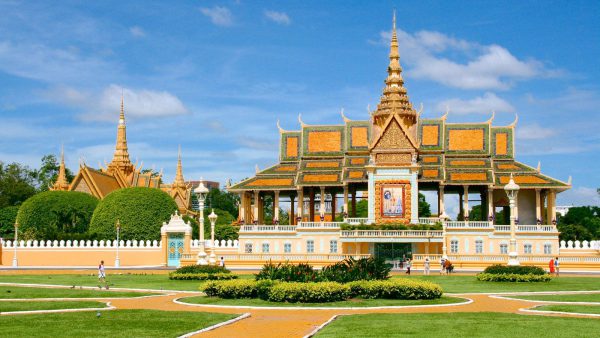BANGKOK, 16 January 2020: Tourist visiting Thailand and its neighbours have been reminded they need permits to fly drones and engage in aerial photography, and there are still sensitive no-go zones.
Thailand, Myanmar, Laos and Cambodia all have introduced strict registration rules and laws forbidding the use of drones without prior approval.
The warnings followed the arrest of two Chinese tourists on Monday for flying a camera-equipped drone above the Royal Palace’s forbidden areas.

The Phnom Penh Post reported Wednesday that two Chinese tourists were caught red-handed as they navigated a camera-equipped drone above the Royal Palace’s no-fly zone.
Officials said drone and photography equipment was confiscated, but the two tourists were released after they were given a dressing down and lectured on the country’s strict rules on drone registration.
According to the Post, police seized a Chinese-made DJI drone, two iPhones, two intelligent flight batteries, a remote control, a Nikon camera and a Godox on-camera flash kit.
The tourists claimed they were unaware that drones were forbidden in the Royal Palace area and claimed they had not seen the signs banning drone flights.
Cambodia introduced rules limiting the use of drones after an incident in 2015 when a German tourist and freelance journalist flew a drone over the royal residence’s courtyard “which took Queen Mother Norodom Monineath Sihanouk by surprise during an evening stroll”.
Rules are also strict in Thailand, Myanmar and Laos. According to Thailand’s national aviation authority, the Civil Aviation Authority of Thailand (CAAT), flying a drone is legal in Thailand, but owners must be compliant with drone regulations listed below.
Rules for flying a drone in Thailand
Drones must be registered if they have a camera, Weigh 2 kg or more.
Drones weighing more than 25 kg (55 pounds) must be registered with the Minister of Transport.
Drone pilots must maintain a visual line of sight with their drone at all times.
Drones must not be flown close to commercial or military aircraft, close to any person, vehicle, construction sites, or buildings at a distance less than 30 metres horizontally.
Drones must not be flown in restricted areas without authorisation, within 9 km from an airport or temporary airfield. Even with authorisation, the flight path height should not exceed 90 metres (295 feet).







What are the rules in Myanmar, Laos, Cambodia and Vietnam? So far, only the regulations in Thailand are clear – which is that drones are allowed, but must have the requisite permits and have some restrictions.
As usual, these less developed countries have not come up with anything concrete that one can find on the internet, other than bans on flying in Phnom Penh and Siem Reap. Some sites claim you can freely fly drones elsewhere in the country but whether this is really true is unknown, because there is no information from the Cambodian authorities to corroborate this.
In Laos, it’s also unknown – drones being imported through the Nam Ngeun checkpoint in Saiyabuli province may be confiscated, but elsewhere you can bring them in as long as you are discrete and no baggage checks are made. In general, Laos is known to conduct baggage checks at smaller checkpoints but not at larger, busier ones.
Ditto for Myanmar – no baggage checks are made at land borders with Thailand so bringing one in that way is no problem but there are no rules about the legalities of flying one that are published anywhere. I would avoid Bagan, Naypyidaw and Yangon of course, but what about in the remote countryside? I’d like to see some up-to-date information. Drones brought in through Yangon airport may be retained by customs and returned on exit – a problem if you intend on exiting a different way.
In Vietnam, drones are retained by customs upon arrival at Danang international airport. Problematic if you intend to leave a different way. No idea what happens at other airports or land borders – Vietnam scans all incoming luggage at every border, unlike some of it’s neighbors so it could be risky, but without a proper source to know the exact regulations, it again creates difficulties for travelers.